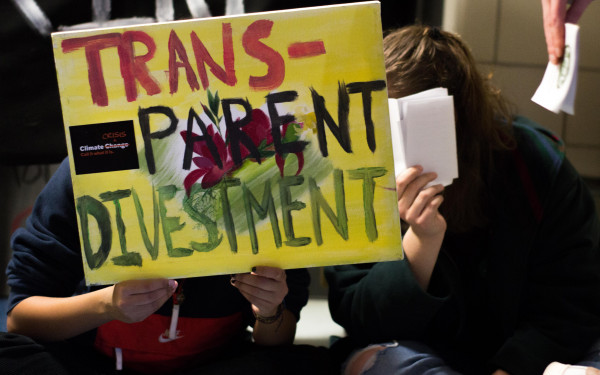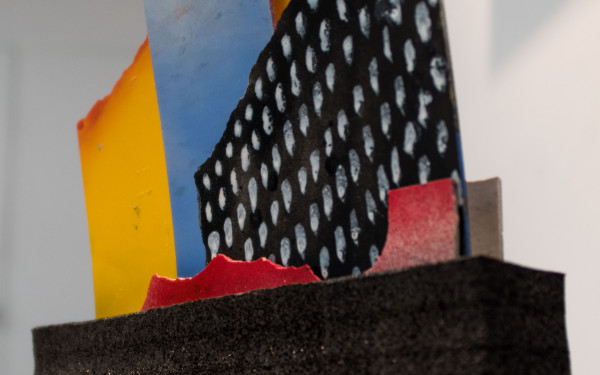Divest From Toxins
Why You Should be Making Homemade Cleaning Products
How’s this for a paradox—we clean to maintain a healthy lifestyle, but our cleaning products are harmful to our health and environment. Canadians spend more than $275 million on household cleaning products every year.
Industrially made cleaners are designed to disinfect homes, fight germs, erase stains and mask odours. But they are really doing more harm than good.
Evidence of these products’ harmful effects isn’t exactly new. According to a study published in New Scientist magazine in 1999, women using aerosol sprays and fresheners in their homes experienced 25 per cent more headaches and were 19 per cent more likely to suffer from depression than those who did not use such products.
It’s best to forget toxic cleaners and go for the homemade, natural options instead. In other words, divest from bad chemicals.
During a workshop at the Concordia Greenhouse earlier this month, Sustainability consultant Shona Watt of Le TinyHomestead discussed the harms of toxic products and the benefits of switching to homemade ones. Watt got her BA in wildlife biology from McGill and also has a Master’s in environmental management. She encouraged shoppers to look at the ingredient list on their cleaning product bottle before buying it.
“Always avoid products with an extensive list of ingredients and really complicated long names,” she said.
One example is 2-Butoxyethanol, a toxin found in many household products. It’s a skin and eye irritant that has been associated with blood disorders and reproductive problems.
The David Suzuki Foundation is a non-profit, environmental organization working to reduce our society’s footprint on the world. The foundation ran a survey in 2012 asking nearly 10,000 participants to provide information on more than 15,000 cleaning products they were using in their homes on a daily basis. The results showed that only 42 per cent of the products displayed a full list of ingredients on their bottle.
Currently, there are no regulations in Canada obligating manufacturers to disclose all ingredients in their products or warn consumers about chronic health and environmental hazards. This is an alarming fact that the foundation is trying to change. The foundation created a webzine called “Mode de vie et compagnie” that focuses on applying simple and user-friendly solutions in our day-to-day life. It offers options on how to live a more sustainable lifestyle.
“Always avoid products with an extensive list of ingredients and really complicated long names.” — Sustainability consultant Shona Watt of Le TinyHomestead
“It’s for people that care about the issue but don’t know how to tackle it,” said Jean-Patrick Toussaint, Science Project Manager for Quebec at the David Suzuki Foundation. “We’re a solution-based organization,” Toussaint continued.
There are alternatives to using toxic products in homes. The first is buying certified natural products—look out for certified eco-labels like EcoLogo, Leaping Bunny, Green Seal and Ecocert. Nevertheless, these products are at times hard to find and quite expensive.
The other alternative is to make your own homemade cleaning products. It’s simple, cheap, and effective.
Tiffany Auerbach is studying holistic nutrition. She came to the workshop at the greenhouse with her mother who is a naturopath. Green living runs in the family. Within the last 12 months, she’s been moving towards a more sustainable, healthy lifestyle.
“It’s been an evolution,” Auerbach said. “I started with my diet first and foremost.”
She is now making her own toothpaste and cleaning products, and is slowly switching to organic makeup. Auerbach said that going green doesn’t only benefit her health—it also benefits the health of the environment.
“We’re not disconnected from the environment around us, we’re all inherently part of it,” she continued.
Most of the chemicals found in toxic products can’t be filtered and broken down naturally. These invisible toxins are being poured down the drain and find themselves in nature. Montrealers experienced a very real example of this with the recent sewage dumping of unfiltered water in the St. Lawrence river.
To avoid using products that are harmful to your health and the environment, start making your own homemade products. These natural recipes will help you divest from toxins and create a healthier environment around your home. The base of most homemade cleaning products is white vinegar, baking soda, and water—ingredients that are cheap and can be bought at any grocery store.
Do yourself a favour—next time you are passing by the cleaning product aisle, just keep walking.
Some homemade cleaning recipes:
BATHROOM CLEANER
In a 750 ml plastic bottle:
1/3 cup white vinegar
5 drops tea tree essential oil
3 tablespoons baking soda
1. Put all ingredients into a plastic spray bottle.
2. Fill rest with hot water.
3. Shake well before every use.
4. Use as you would any other bathroom cleaning spray.
AIR FRESHENER
In a 750 ml plastic bottle:
1/2 cup white vinegar
8 drops whatever essential oils you like
Put vinegar and oils into a plastic spray bottle, capable of
misting.
Fill the bottle the rest of the way up with hot water.
Shake well before every use.
WINDOW CLEANER
In a spray bottle:
1/4 cup white vinegar
1/2 teaspoon natural liquid soap
(recommended: Dr. Bronner’s
2 cups water
Put vinegar, soap and water in a plastic spray bottle.
Shake well before every use.

2_900_600_90.jpg)
_900_600_90.jpg)
_600_832_s.png)

2WEB_600_375_90_s_c1.jpg)
_(1024x719)_600_375_90_s_c1.jpg)

